I've had good results using the graph-tool library in python. The below graph has 1,490 nodes and 19,090 edges - it took around 5min to render on my laptop.

The graph data comes from the political blogging network described by Adamic and Glance in “The political blogosphere and the 2004 US Election” pdf link here. If you zoom in you can see the blog urls for each node.

Here's the code I used to draw it (blog http://ryancompton.net/2014/10/22/stochastic-block-model-based-edge-bundles-in-graph-tool/ ):
import graph_tool.all as gt
import math
g = gt.collection.data["polblogs"] # http://www2.scedu.unibo.it/roversi/SocioNet/AdamicGlanceBlogWWW.pdf
print(g.num_vertices(), g.num_edges())
#reduce to only connected nodes
g = gt.GraphView(g,vfilt=lambda v: (v.out_degree() > 0) and (v.in_degree() > 0) )
g.purge_vertices()
print(g.num_vertices(), g.num_edges())
#use 1->Republican, 2->Democrat
red_blue_map = {1:(1,0,0,1),0:(0,0,1,1)}
plot_color = g.new_vertex_property('vector<double>')
g.vertex_properties['plot_color'] = plot_color
for v in g.vertices():
plot_color[v] = red_blue_map[g.vertex_properties['value'][v]]
#edge colors
alpha=0.15
edge_color = g.new_edge_property('vector<double>')
g.edge_properties['edge_color']=edge_color
for e in g.edges():
if plot_color[e.source()] != plot_color[e.target()]:
if plot_color[e.source()] == (0,0,1,1):
#orange on dem -> rep
edge_color[e] = (255.0/255.0, 102/255.0, 0/255.0, alpha)
else:
edge_color[e] = (102.0/255.0, 51/255.0, 153/255.0, alpha)
#red on rep-rep edges
elif plot_color[e.source()] == (1,0,0,1):
edge_color[e] = (1,0,0, alpha)
#blue on dem-dem edges
else:
edge_color[e] = (0,0,1, alpha)
state = gt.minimize_nested_blockmodel_dl(g, deg_corr=True)
bstack = state.get_bstack()
t = gt.get_hierarchy_tree(bstack)[0]
tpos = pos = gt.radial_tree_layout(t, t.vertex(t.num_vertices() - 1), weighted=True)
cts = gt.get_hierarchy_control_points(g, t, tpos)
pos = g.own_property(tpos)
b = bstack[0].vp["b"]
#labels
text_rot = g.new_vertex_property('double')
g.vertex_properties['text_rot'] = text_rot
for v in g.vertices():
if pos[v][0] >0:
text_rot[v] = math.atan(pos[v][1]/pos[v][0])
else:
text_rot[v] = math.pi + math.atan(pos[v][1]/pos[v][0])
gt.graph_draw(g, pos=pos, vertex_fill_color=g.vertex_properties['plot_color'],
vertex_color=g.vertex_properties['plot_color'],
edge_control_points=cts,
vertex_size=10,
vertex_text=g.vertex_properties['label'],
vertex_text_rotation=g.vertex_properties['text_rot'],
vertex_text_position=1,
vertex_font_size=9,
edge_color=g.edge_properties['edge_color'],
vertex_anchor=0,
bg_color=[0,0,0,1],
output_size=[4024,4024],
output='polblogs_blockmodel.png')

